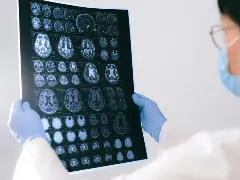

Your health and wellness are shaped by the environment in which you live, socioeconomic factors, and health-related behaviors. The culmination of those factors is known as social determinants of health (SDoH).
Considerations that contribute to SDoH can include an individual's educational opportunities, their ability to access safe housing, the availability of healthy food options, their distance from reliable transportation, and so on. These factors all work together to play a role in determining health outcomes. For aging adults—for whom overall health, vision health and lifestyle are greatly connected—these factors can combine to impact quality of life.
How, and what resources can aging adults turn to for SDoH support?
Your Vision Health Reflects Your Overall Health
While SDoH impact whole-body health, they are also critical to eye health and vision-related disease management. In fact, people who report poor access to healthcare, loneliness, and low food security levels generally tend to also have eye diseases like cataracts, age-related macular degeneration, diabetic retinopathy, glaucoma, and more.
Going to the eye doctor is proven to keep you healthier overall, and this is especially important for older adults who are more prone to things like glaucoma and cataracts. To add, vision care practitioners are able to identify over 30 different chronic health conditions, like diabetes, just by performing an eye exam, allowing for early intervention and treatment that can save your vision and your wallet.
It is imperative that older Americans prioritize going to the eye doctor. For example, adults over the age of 40 are at a greater risk of eye diseases that can cause serious injuries like broken bones after falling. So, by not skipping or prolonging eye doctor appointments, you’re taking active steps to avoid eye-related health problems and other health problems later in life.
Yet, many older adults struggle to visit their eye doctor, as, SDoH can exacerbate pre-existing health problems. These issues include things like restricted mobility and affordability of proper transportation that can make it hard to access medical care or require the help of a caregiver to manage your health needs.
Today, health plans and their managed vision care partners are taking steps to address the negative impacts that SDoH have on seniors. Some innovative solutions include establishing mobile clinics, conducting in-home eye exams, engaging at-risk populations through clinical outreach programs, and increasing points of care through technology – such as telemedicine and other virtual care options. Each of these programs work to remove or lessen barriers to care, such as lack of transportation and restricted mobility, that are commonly experienced by seniors.
Tips For Taking Care of Your Eyes
Keeping in mind the many factors that influence older adults’ health, here are some tips to protect your vision and holistic health:
- Know you aren’t alone. Talk to your caregiver, your health plan, your eye care provider, and members of your community about the age-related issues you’re facing that stem from SDoH. Whether it’s trouble driving to eye doctor appointments, issues moving around, communication challenges, or something else.
- Find new ways to access care. Explore what telemedicine and virtual care options are available to you.
- Don’t smoke. Smoking tobacco increases your risk of macular degeneration by 5.5 times if you’re over age 80. Stopping smoking can keep your eyes and whole-body healthier.
- Use your community. Reach out to community-based organizations by phone or email to see what local resources are available for things like glasses, nutrition education, cooking classes, transportation to the eye doctor or grocery store, and so on.
- Know your medical plan. Ask about what is covered under your medical plan so you know how much an eye exam will cost ahead of time and can plan accordingly leading up to the appointment.
Final thoughts
During the pandemic, many disparities caused by SDoH have weighed heavy – and continue to weigh heavy – on older adults in particular.
Taking care of your eyes can help you live a longer, healthier, and happier life. It might not always be easy to prioritize your health given your current environment or situational circumstances but asking the right questions and touching base with the right resources will help you ward off preventable medical conditions.
About the contributor:
Elizabeth Klunk oversees clinical strategy and medical policy that supports utilization management and ensures our organization maintains the highest quality of clinical and operational services.








Comments
Post a Comment